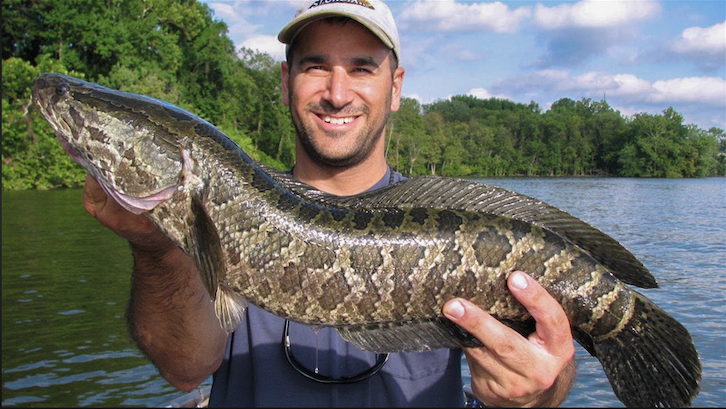Encyclopedia Dubuque
"Encyclopedia Dubuque is the online authority for all things Dubuque, written by the people who know the city best.”
Marshall Cohen—researcher and producer, CNN
Affiliated with the Local History Network of the State Historical Society of Iowa, and the Iowa Museum Association.
SNAKEHEAD
SNAKEHEAD. The first known northern snakehead was found in the MISSISSIPPI RIVER in 2017. An invasive species, they were known for a creepy appearance, almost no tail, its ability to survive on land in a dormant state, and a voracious appetite that threatened any other type of fish. Growing up to three feet long and found in at least fourteen states, its extermination was promoted by conservation officials. (1) Two agencies within the Department of the Interior (DOI) were responsible for researching and regulating snakeheads: the U.S. Geological Survey (USGS) and the U.S. Fish and Wildlife Service (FWS). As the research arm of the DOI, the USGS conducted extensive, worldwide research on snakeheads that provided a basis for regulating the importation and interstate transport of these fish in the United States.(2)
Funding for that research was sponsored through a grant from another DOI agency, the U.S. Fish and Wildlife Service, which was responsible for fisheries management, regulations, law enforcement, and education. In 2002, the FWS added the snakehead family of fish (Channidae) to the list of injurious wildlife under the Lacey Act. This included all currently recognized species and any new species that may be described within that family in the future. By taking this action, snakehead fish could no longer be imported into the U.S. or be transported across state lines without a permit. (3)
Originally from China or Africa, the various subspecies of snakefish were imported to the U.S. as aquarium fish or as food fish served in restaurants; some were released into waterways and spread. A snakehead was found in a river in Wisconsin in 2003. (4)
Snakeheads were not considered gamefish so there were no limits or seasons on them. They tended to hit live bait or artificial baits that looked like minnows since that was their major food. (5) If a person caught a strange looking fish, they were to contact your local Game and Fish Department and have them identify it. Non-native species of any kind were a distinct problem for U.S. waters. (6)
Snakefish could be eaten, and despite its unusual appearance, its flesh was good to eat. The taste was been compared to cod or tilapia--or for some people, chicken. It could be cooked in the same way as cod or other whitefish. Some fine restaurants even bought fish from sportsmen who caught them. (7)
---
Source:
1. Garrison, Ronny, "Snakehead Fish: A Non-Native Species Causes Trouble in U.S. Waters," Online: https://www.liveabout.com/snakehead-fish-1310228
2. "What is the Federal Government Doing about Snakehead Fish?," USGS (United Stated Geological Survey), Online: https://www.usgs.gov/faqs/what-federal-government-doing-about-snakehead-fish?qt-news_science_products=0#qt-news_science_products
3. Ibid.
4. Garrison
5. Ibid.
6. Ibid.
7. Ibid.


